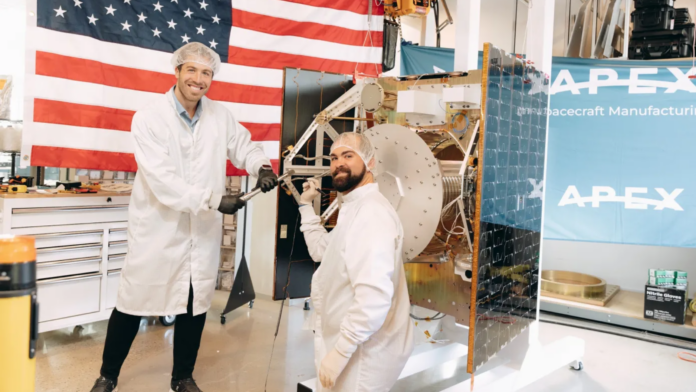In a significant stride towards revolutionizing satellite bus manufacturing, Apex Space, backed by notable investors like Andreessen Horowitz and Shield Capital, recently announced the successful orbit entry of its pioneering satellite. This landmark achievement signifies Apex Space’s dedication to transforming the satellite manufacturing landscape.
The launch was part of SpaceX’s Transporter-10 rideshare mission, marking the debut flight for Apex’s “Aries” class satellite. Ian Cinnamon, CEO of Apex, shared the thrilling moment when mission operators quickly established contact with the spacecraft, thanks to its flight path over a ground station. This initial interaction was made through a UHF beacon, sending back critical data packets indicating the satellite’s health. Subsequently, the communication shifted to an S-band radio, allowing for a richer data exchange and the ability to engage in bidirectional communications with ground stations.
This milestone not only confirms the satellite’s operational status in orbit but also sets a new industry record for the fastest design to production turnaround for a spacecraft, achieved in just one year. Based in Los Angeles, Apex is now gearing up to conduct comprehensive tests on the satellite and its subsystems, ensuring everything is in prime condition for customer utilization.
Originally, the mission was envisioned purely as a technological demonstrator. However, conversations with potential customers who expressed interest in purchasing their satellites led to an opportunistic pivot. Apex decided to accommodate small customer payloads on this inaugural mission as a means of building relationships and showcasing their capabilities. This decision reflects Apex’s adaptive strategy and customer-focused approach, turning the Aries SN1 satellite into a dual-purpose endeavor: a technological demonstrator and a pilot platform for customer payloads.
Following the six-month payload operation period by customers, the Aries SN1 will transition into a software testbed. Apex plans to leverage it for ongoing flight software, and guidance, navigation, and control system tests, with an operational lifespan of five more years projected in orbit. This long-term utility underscores Apex’s commitment to innovation and continuous improvement in the satellite domain.
Apex’s ambition doesn’t stop with the Aries class. The company is also developing two larger satellite bus lines, Nova and Comet, with plans to kickstart production by 2025. These initiatives are part of Apex’s broader mission to address and solve the satellite bus bottleneck challenge, paving the way for more efficient and scalable satellite manufacturing processes.
This launch not only represents a significant technological achievement but also a pivotal moment for Apex Space and the satellite manufacturing industry at large. As Apex continues to push the boundaries of what’s possible, its journey exemplifies the innovative spirit driving the future of space exploration and utilization.










